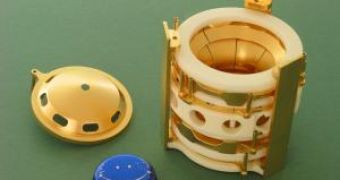Isomers are very important to scientists mostly because their ground state atomic nuclei can provide with valuable information regarding interactions between the protons and neutrons present inside the nucleus. Some isomers may only live for a few fractions of a second while others, for millions of years at a time, the last of them gaining the main interest for researchers.
What is an isomer?
Excitation applies both to atoms and molecules alike. The best example would be the inert gases routinely used in fluorescent tubes. When a voltage is applied to the filaments at the ends of the tube, electrons traveling through the gas provide with surplus energy that is eventually absorbed into individual atoms. However, atoms cannot remain excited forever and must return to their ground state at some point in time.
When this happens, the electrons regain their previous energy state by emitting energy in the form of electromagnetic radiation, namely visible light. The process is not restricted only to electrons but is available for protons and neutrons alike. Usually this excited-state of the nuclei is experienced for only a few trillions of a second after which the nucleons decay to their previous state.
The nuclei which may find themselves into excited states for longer times are called isomers, and their special configuration poses questions such as what is the ratio of protons to neutrons that isomers can exist in, or what special properties they have, how long they live or what is their excitation energy?
The experiment
The Michigan State University's National Superconducting Laboratory discovered a new iron isomer during measurements of rare isotopes that are somehow close to it, namely the nickel-68 isotope, which has a nucleus configuration composed of 28 protons and 40 neutrons. Unlike most isotopes in which the higher energetic shells of the nucleus are only partially filled, nickel-68 fills both the low and high energy states with protons and neutrons, giving it the characteristics of a doubly magic nucleus.
"We have no good idea what is happening in this nuclear region, so more measurements are needed," said Georg Bollen, professor at Michigan State University and co-author of the study. By smashing germanium nuclei, at velocities half of that of light, into a thin target, the Coupled Cyclotron Facility created multiple isotopes amongst which iron-65, having 26 protons and 39 neutrons. The stable iron isotope found on Earth has only 26 protons and 30 neutrons.
Afterwards, the newly created isotopes were directed towards the helium gas cell with the help of powerful electric fields where they are trapped by a strong magnetic field. The frequency of the magnetic field is in direct relation to that of the mass of the captured isomer particles, thus, while studying iron-65 particles, the team realized there are two distinct frequencies for it, which could only be explained by the presence of a much heavier iron-65 isomer, previously unknown to researchers.
This is the first experiment in the world capable of capturing fast beams of nuclei in order to measure them with high precision. The leader of the study, Georg Bollen, is one of the experts in atomic and nuclear physics interface, and he helped in the design of the ISOLTRAP, which is currently being used by the European Organization for Nuclear Research to study the mass of short lived nuclei.
Bollen concludes that: "The nuclear region we looked at still has lots of uncertainty, but we were successful in adding an intriguing new piece of information. And we did so by going beyond gamma-ray spectroscopy, the classical means of studying isomers; finding isomers by weighing nuclei with very high precision bears interesting prospects for future studies."

 14 DAY TRIAL //
14 DAY TRIAL //